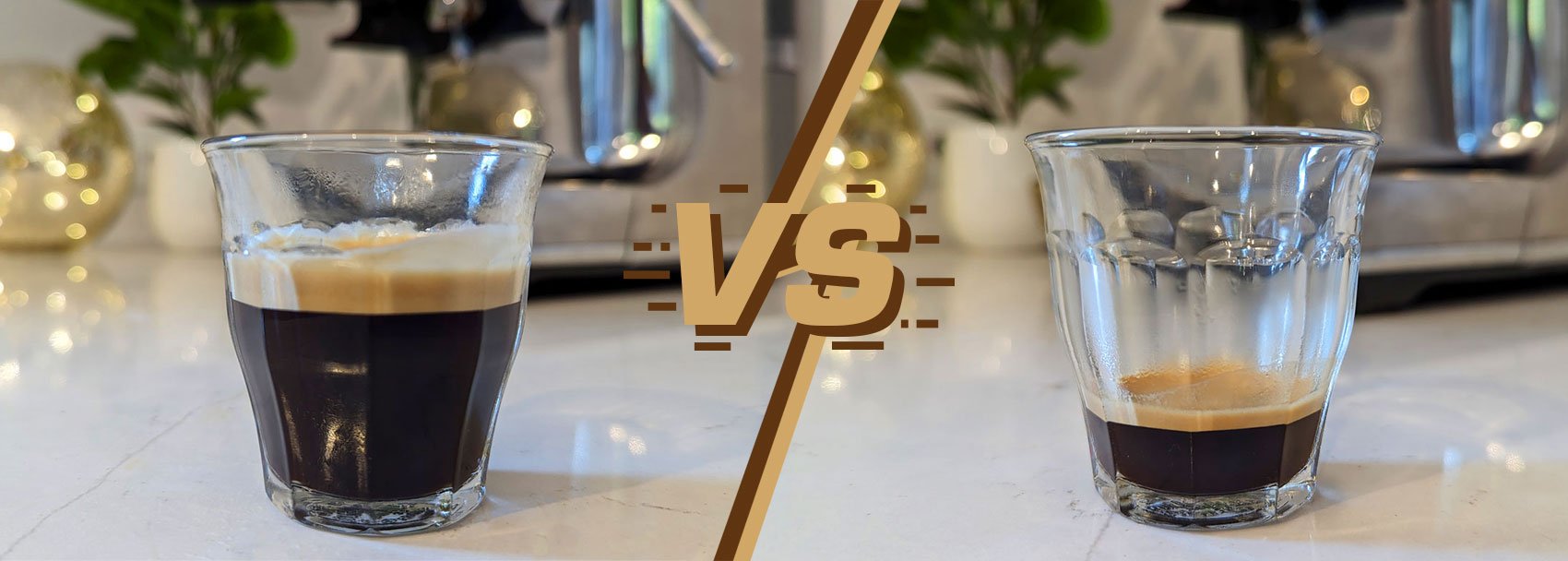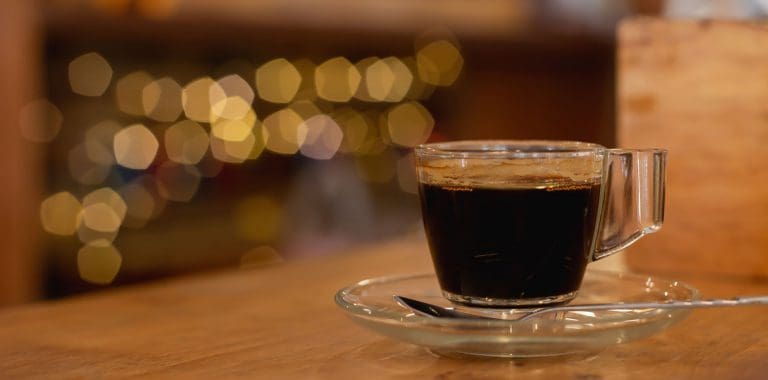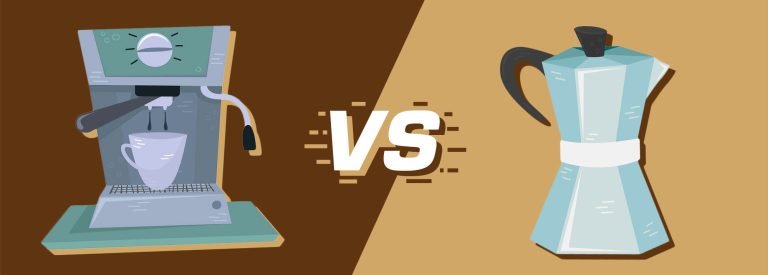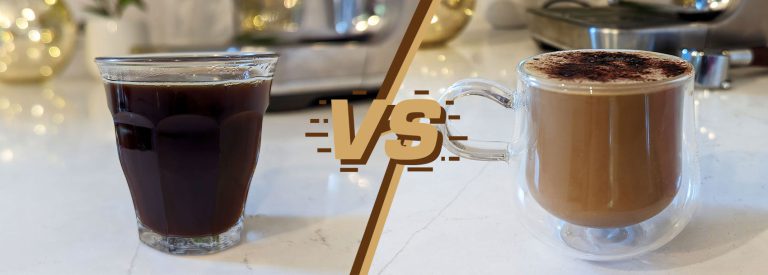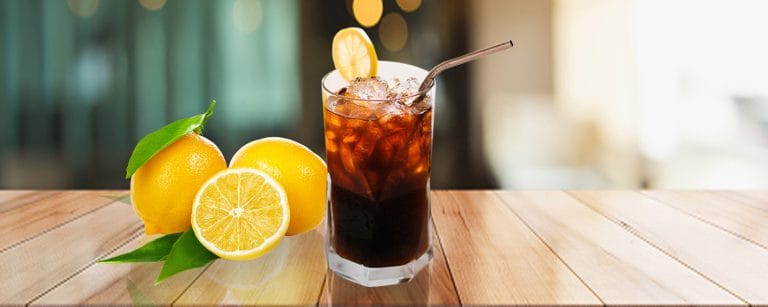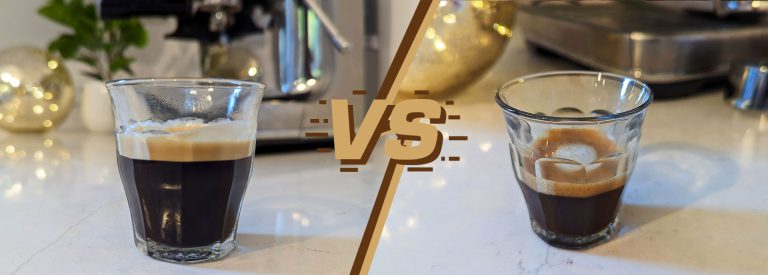Espresso vs Ristretto: How Less Water Affects Your Brew
Espresso and ristretto are famous brews for coffee lovers, especially for those who love an intense kick of caffeine.
If you don’t really know what sets these two beverages apart, don’t worry, I didn’t always know either.
In this article, I’ll give you a detailed walkthrough of these drinks, including their ingredients, ratios, and methods of preparation. After reading this, you’ll know which is which, and choose the one you like more whenever you have espresso-style coffee.
What is an Espresso?
Luigi Bezzera, an Italian businessman, is credited for the espresso we know today after he patented the first espresso machine in 1901. This device was built to rapidly brew coffee using high pressure, which also enhances its bold and concentrated taste.

Espresso coffee is known for its strong flavor and thick texture with a golden crema layer on top and it’s served in demitasses that hold 2 to 3 oz (60-90 ml) of liquid.
The taste of an espresso will depend on the type of coffee beans you use. Lighter to medium roasts bring out the inherent flavor in the coffee cherries the best. while darker roasts are nutty, smokey, and are generally much stronger. Here are my favorite espresso coffee beans.
Each espresso portion requires 7g of coffee grounds for a 1-oz single shot and 14 g for a 2-oz double shot; alternatively, third-wave specialty coffee uses 9g and 18g respectively. This amount is matched with water guided by a 1:2 to 1:3 coffee-to-water ratio. As a result, each shot translates to 60 to 80mg of caffeine and 2 calories (which I tend to round to 0 in my mind).
Let’s move on to have a quick look at how to brew an espresso:
- Weigh the coffee beans.
- Grind until finely ground.
- Add the grounds into the portafilter and tamp properly.
- Connect it to the espresso machine and pull your shot.
- Analyze taste and adjust the variables accordingly.
For detailed instructions, check out my step-by-step article on how to make an espresso.
Now let’s have a look at the ristretto.
What is a Ristretto?
Ristretto, which stands for “restricted” in Italian, was developed as a stronger version of the espresso. It uses the same quantity of coffee grounds but reduces the amount of water, following a 1:1.5 coffee-to-water ratio.
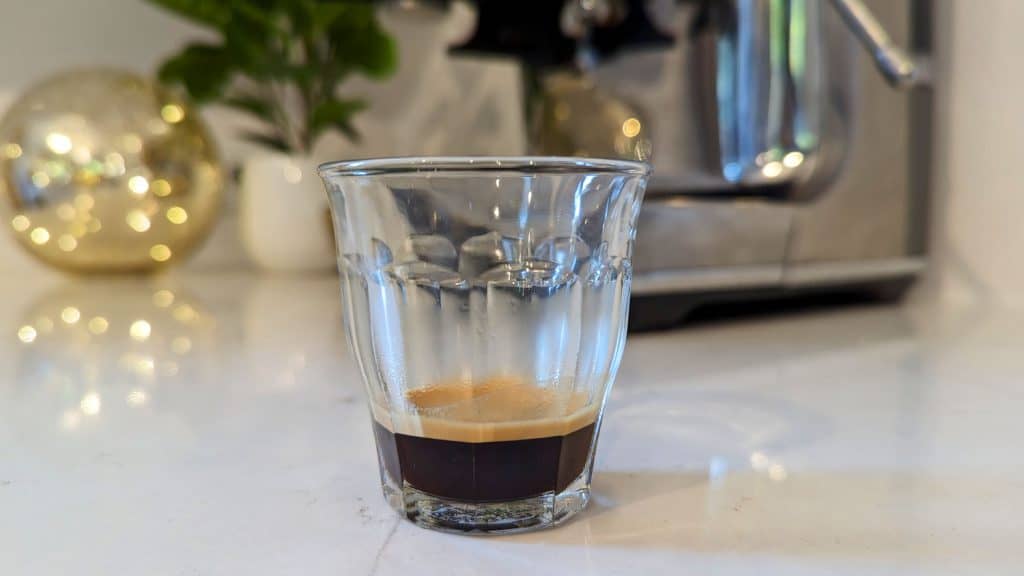
I remember the first time I heard someone ordering a ristretto after a large dinner, I didn’t even know what it was.
A single shot of ristretto uses 7g of ground coffee while third-wave specialty coffee uses 9g. With less water, you’ll end up with only a 0.7-ounce (20 ml) of coffee in your 2-oz to 3-oz (60–90 ml) demitasse cup.
While smaller in amount, this drink still packs a punch with its bold and concentrated taste along with a thick texture, a powerful aroma, and higher acidity. The shorter brew time doesn’t allow for those overly bitter tastes to come through. In fact, it can easily be sour if prepared incorrectly, or with the wrong coffee beans and roast. For example, light roast beans do not go well at all with the shorter brew time of the ristretto, since they inherently taste more citrusy, which is only amplified by the brew time.
It is sort of weird since it is not what you would think a shorter espresso would be like. This is because the 2nd stage of espresso extraction is missing, which is responsible for bringing balance to the cup.
Despite the shorter brew time, the caffeine content also ranges from 60 to 80 mg, with only 2 calories per shot. The same as a full espresso. You -might think that the shorter brew time results in less caffeine, but no. You can see in this graph from Researchgate that most of the caffeine is extracted by around 20 seconds of brew time.

Here is a simple guide to preparing a ristretto:
- Grind coffee beans until finely ground.
- Put the coffee grounds in the portafilter basket.
- Tamp the coffee grounds.
- Lock the portafilter in your espresso machine and press the brew button.
- Pull a shot for 15-18 seconds only.
Learn more about these steps by reading my detailed guide on how to make a ristretto.
Espresso vs Ristretto: What Sets Them Apart?
Now that you know what espresso and ristretto shots are, here’s a table comparing the two drinks:
| Aspect | Espresso | Ristretto |
|---|---|---|
| Taste and Texture | Strong and intense flavor with a rich, syrupy texture | Bold and concentrated taste with a thick texture and full aroma with less bitterness and crema |
| Coffee-to-Water Ratio | 1:2 to 1:3 | 1:1.5 |
| Ingredient Ratio | Just coffee | Just coffee with less water than an espresso |
| Typical Serving Size | 1 oz (30 ml) for a single shot, 2 oz (60 ml) for a double shot | 0.7 oz (20 ml) |
| Caffeine Content | 60-80 mg per 1 oz shot | 60-80 mg per shot |
| Calories | 2 calories per shot | 2 calories per shot |
| Acidity | Moderate acidity | Higher acidity |
| Brewing Difficulty | Intermediate | Intermediate |
| Bean Roast | Light to medium | Medium |
And a side-by-side look, adding the lungo in this image as well.
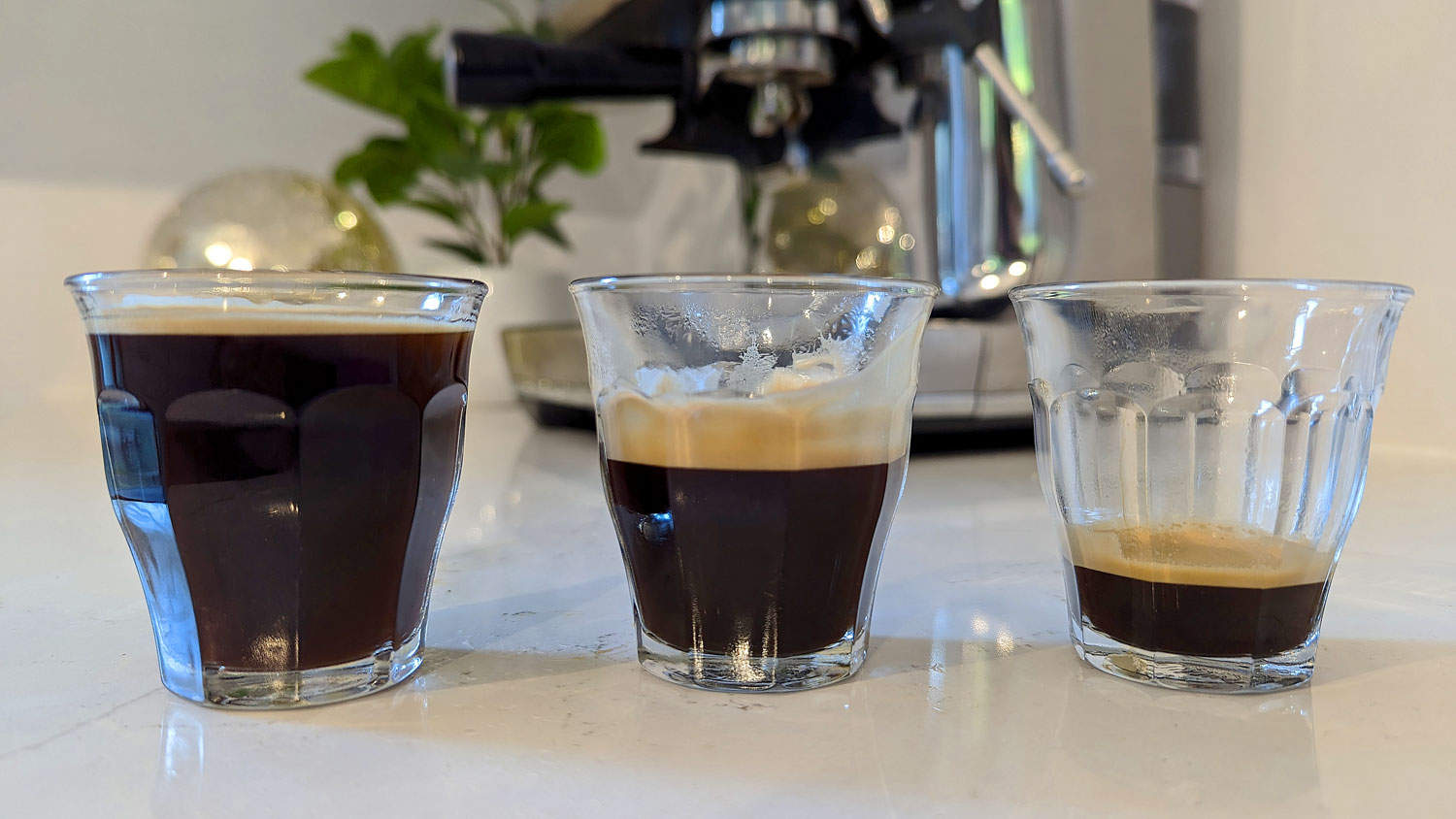
Here’s a detailed look at how espresso and ristretto compare with each other:
- Ground coffee weight and ratios: While the two drinks use the same amount of coffee grounds at 7g per shot (or 9g for third-wave coffee), they differ in brew ratios. Espresso uses a 1:2 or 1:3 coffee-to-water ratio, but the ristretto compresses the proportions to 1:1.5.
- Taste: An espresso is already a robust drink, but a ristretto has a bolder flavor profile. Since ristretto’s extraction time is shorter, it highlights the coffee’s sweet and aromatic notes with less bitterness. Meanwhile, espresso is more balanced in its sweetness, bitterness, and acidity.
- Volume, calories, and caffeine: Since the two drinks use the same amount of coffee grounds at 7g per shot (or 9 g for third-wave coffee), both contain 60 to 80 mg of caffeine and 2 calories in each shot.
Both beverages are also served in 2 to 3 oz (30 to 60 ml) demitasses, but the ristretto is smaller in its serving size of only 0.7 oz (20 ml) while espresso comes in servings of 1 oz (30 ml) for a single shot and 2 oz (60 ml) for a double shot. - Bean roast: Based on my experience, light to medium roasts suit espresso best, resulting in a complex cup with citrus or floral notes. While dark roasts are traditionally used for Italian espresso, I find that the strong bitterness can mask the complexities of specialty coffee beans.
For ristretto, I recommend medium roasts, which is just right for an intense but slightly sweet coffee. I have tried light roast ristrettos before, but they were just too bright and acidic. - Serving suggestion: I recommend that you savor your espresso with a glass of sparkling water within reach so you can really relish the subtleties of your beans.
Meanwhile, the ristretto works well with tiny portions of sweets like chocolate truffles and cookies. It’s also a great choice when I crave coffee after a hearty meal.
So as you can see, the drinks are very similar, but there are still many differences that set them apart.
Conclusion
Reducing the water in an espresso to make a ristretto seems like a small change but it can make a significant difference in your coffee. Personally, I like Ristretto a lot because the added intensity and reduced bitterness are really up my alley, but I switch it up with espresso when I want a “lighter” shot 🙂
But that’s just me. How about you, which kind of coffee do you like better?

